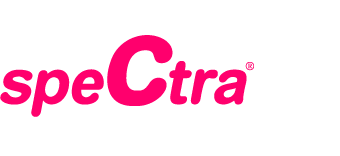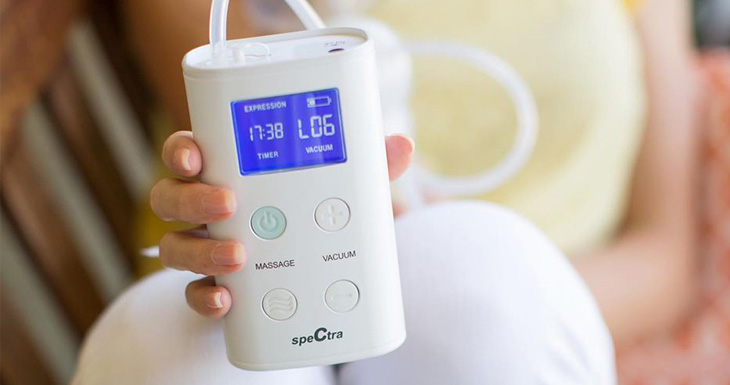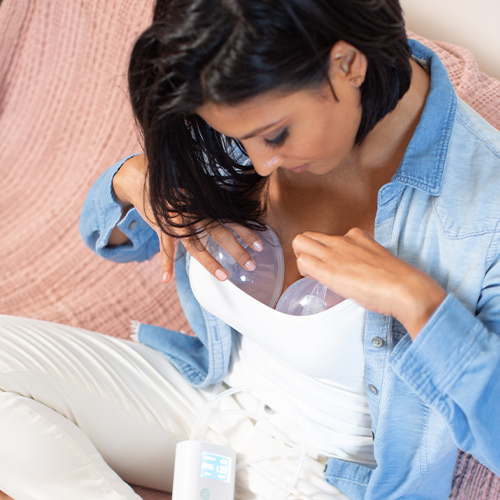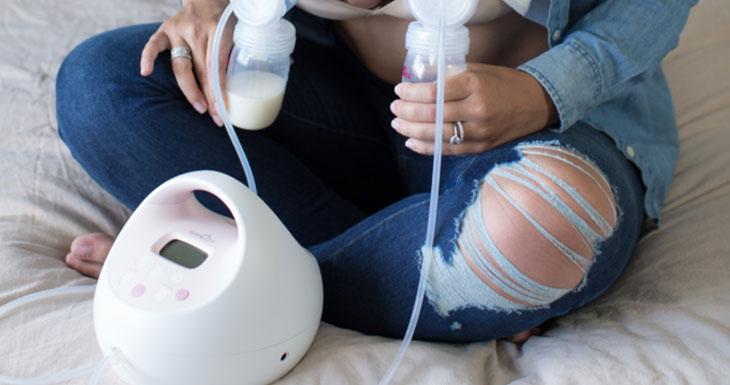5 Quick Tips for Pumping at Work
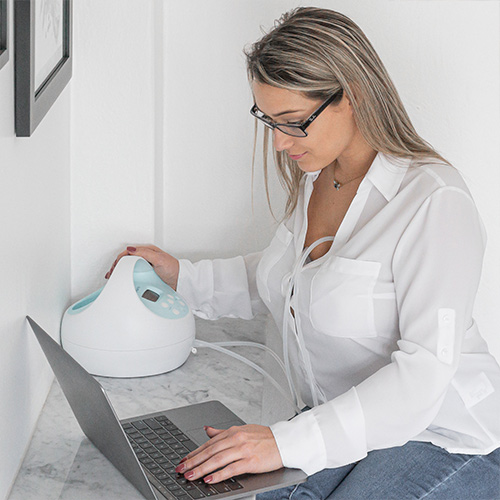
Melissa Portunato MPH, IBCLC, RLC
You’ve finally gotten into a sweet groove with breastfeeding and now it’s time to head back to the office. You can absolutely continue to breastfeed and maintain a healthy milk supply while away from your baby. It can seem overwhelming at first, but all you need are the right tools to help you get into a manageable routine. We know you can do it! We believe in you!
Here are 5 quick tips to make pumping at work easier.
1) Make a Schedule
Plan on pumping every 3-4 hours to maintain a healthy milk supply. Set those alarms and block off pumping time on your calendar to make sure you don’t go too long without pumping. Practice at home about a week before returning to work at the times you will be pumping. This will make you more comfortable and confident so you can smash your first day back!
2) Have a backup plan
Getting ready for work with a baby can take more time now than when you were flying solo. A checklist can help you make sure that you have everything you need when you leave the house. But even with a system, there’s a good chance that one day you’re going to be in a hurry and forget something crucial, like duckbill valves or your flanges. Keeping replacement parts at work can be a lifesaver. It’s also a good idea to have a handy manual pump in your car or office, just in case you forget your pump altogether.
3) Go Hands-Free
If you’re pumping at work, getting a hands-free bra so that you can do other things besides holding your breast shields during the time you spend pumping can be a game-changer. It will also allow you to use Hands-on Pumping which can make pumping sessions more efficient. Skip the pumping bra and level up your pumping game with the Spectra Caracups. Pumping with the Spectra Caracups will make the whole process even easier AND discreet if you need to be on a virtual meeting or even in person with a client.
4) Milk Storage and More
The more you can leave at work, the lighter the load will be on your commute. If you will be traveling with your pump, choose a pumping bag that can store it all: Spectra pump, cooler case, water bottle, laptop, water bottle, snacks, and other personal items. Check out our new pump, store and feed system! The Spectra Simple Storage Kit uses innovative technology that will keep your milk clean, safe, and always ready to use. No more bottle washing either!
It’s recommended that you wash all your pumping parts after every use. If you know you won’t have access to a sink, bring enough sets of pump parts to get you through the day. Placing pumping parts in the refrigerator in between uses is not recommended.
5) Community and Support
Let your managers and co-workers know in advance that you will be pumping milk for your baby. Make friends with other pumping moms in your office. If there are other women using the lactation room at your office, try to get to know them. Having pumping mommy friends can make your breastfeeding journey even more meaningful. Knowing you are not alone can get you through a rough day and help you press on. Connect with a virtual breastfeeding support group too!
Can’t get a letdown? This is common when moms return to work. Try to relax. Throw a nursing cover over you, listen to music, or watch videos of your baby. Whatever you do, don’t watch the bottles! It can be stressful pumping on a time crunch and can take some time to get used to. With patience, practice, and support you can continue to meet your breastfeeding goals.
Are you returning to work virtually from home? We got you covered. Check out our top tips to make the transition smooth and easy! Need help returning to work at the office or virtual? Our IBCLCs can help with pumping schedules, flange sizing, and much more. Schedule your complimentary phone call or virtual consultation today.
